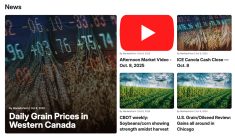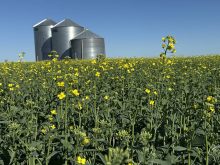Steers up slightly
An anti-dumping duty placed on Canadian live cattle exports has not had a serious effect so far on western markets.
Last week, steers were fetching $1 more per hundredweight than the week before.
The cash to cash price spread between Canada and the United States was $11 to $12 on steers. It is $1.76 higher than last year at this time, but analyst Herb Locke said the price spread has been wider in years past.
Slaughter animals continued to move through the system at a record pace. Slaughter was up 10 percent over last week.
Read Also

Huge Black Sea flax crop to provide stiff competition
Russia and Kazakhstan harvested huge flax crops and will be providing stiff competition in China and the EU.
Alberta packers are killing on Saturdays to move the numbers through. Cargill is on its 15th Saturday kill this season. A positive packer margin has kept the kills large and beef demand has been good in the barbecue season. This week’s steer kill was up nine percent over last year at this time and 16 percent more heifers were killed than in July 1998.
Market watchers should pay attention to an anticipated shortage of feeder calves this fall because of substantial reductions in the breeding herd. Competition could be fierce.
For the week ending July 30, Ontario prices reported large framed steers were $84.50-$97.75 and medium framed steers $82-$91.20. Cows topped out at $79.50. Grade A steers on the rail traded $154-$155 and heifers $153-$155.
Alberta steers traded at $87.55 or flat rail $143.10-$145.25. Cows averaged around $58.
Hog futures take dive
The hog trade continues to fare poorly. Hogs traded at $1.11 on July 30. August and October lean hog futures prices have fallen by more than 20 percent since the first week of May.
The American mid-western heat wave delayed U.S. hog marketings and once cool weather returns, the surge in sales will cause prices to fall, say Manitoba Agriculture analysts.
American feed costs are fluctuating and if corn stays cheap, producers may elect to feed their hogs longer. Increased marketings in late August and September, when pork supplies are already seasonally large, could spell trouble.
If some herd liquidation starts, additional slaughter hogs could mean lower hog prices for the rest of the third quarter.
















